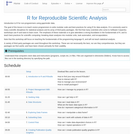Creating art from found materials is not a new concept. Josef Albers, one of the most famous residents and faculty members of Black Mountain College, encouraged his students to create art from scarcity. This art project is based on the same principals of making something amazing out of something that was discarded or seen as irrelevant. Grade Level 7/8Lesson name: Trash to TreasureTimeline: 5 work sessions at 40 MinutesMajor Concept: Assemblage of assorted materials to create art.Visual Art NCES7.V.2 Apply creative and critical thinking skills to artistic expression. 7.V.3 Create art using a variety of tools, media, and processes, safely and appropriately. 8.V.2 Apply creative and critical thinking skills to artistic expression. 8.V.3 Create art using a variety of tools, media, and processes, safely and appropriately. 8.CX.1 Understand the global, historical, societal, and cultural contexts of the visual arts. Essential QuestionHow can I take found materials to create a complete new piece of artwork? Revised Bloom’s Taxonomy forNCES CoursesEvaluate: Students will evaluate the uses of found materials in their personal artwork.Apply: Students will apply their knowledge of the elements of design when putting together their composition.Create: Students will create an original piece of art using a variety of tools, media, and processes.Lesson Details and FacilitationAbout a week or more before you plan to teach this lesson, show your students the following videos: http://safeyoutube.net/w/Uued, http://safeyoutube.net/w/PredOnce you have shown the videos, ask the students to be on the lookout for materials they think might be useful in creating artwork. Once collection has begun, put the materials into groups for students to look through for inspiration. Assign each student a type of symmetry. Based on what they are assigned, they will create a composition. They will then glue their found objects into place. While, students are working, they should talk with their table about what looks interesting and get other opinions on their work. MaterialsAssorted materials (Ex: bottle caps, string, gum wrappers, old jewelry, pencils, buttons, anything you can find that could be repurposed.)Glue, (Hot glue, Modge Podge, white glue, tacky glue)Backing (Cardboard, book board, mat board, pasteboard, wood)VocabularyAssemblage, collage, repurpose, found materials, composition, elements of design, balance, functional fixedness, repetition, emphasis, linear symmetry, asymmetrical, radial symmetryIntegration Cross CurricularIn art class, discuss The Great Depression and how scarcity led to creativity. Discuss how a place very much like Ashe county became a “Mecca”, so to speak, for artistic ingenuity. Discuss with students what it might have been like to attend BMC and participate in the community that the college created. Seventh Grade teachers can discuss the migration of Jewish artists to America and how their influence shaped American art of that time period.Eighth grade teachers can discuss the shortages created by World War 2 that led to the idea Josef Albers had to repurpose found materials for use in art.ResourcesThe Black Mountain Connectionhttps://docs.google.com/document/d/1yyLhjSV599Uph4eKelG5NPpJW6f9pp3KvvjGjxJqmJ8/edit?usp=sharing


